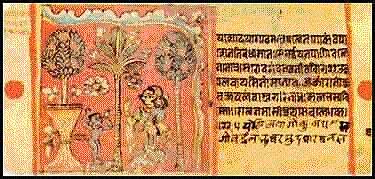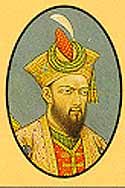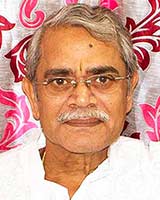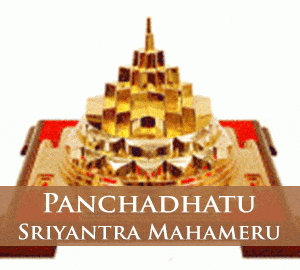THE history of India from A.D. 1526 to 1556 is mainly the story of the Mughul-Afghan contest for supremacy in this land. The previous Mughul (Mongol) inroads into India did not produce any tangible result except that they added, through the settlement of the “New Mussalmans “, a new element to the Indian population and at times harassed the Turko-Afghan Sultans. But the invasion of Timur, who occupied a province of the Empire, the Punjab, accelerated the fall of the decadent Sultanate. One of his descendants, Babur, was destined to attempt a systematic conquest of Northern India and thus to lay here the foundation of a new Turkish dominion, which being lost in the time of his son and successor, Humayun, in the face of an Afghan revival, was restored by the year 1556 and was gradually extended by Akbar. In fact, there were three phases in the history of the Mughul conquest of India. The first phase (1526-1530) was occupied with the subjugation of the Afghan and the Rajputs under Rana Sanga. The second phase (1530-1540) commenced with the reign of Humayun, who made unsuccessful attempts to subjugate Malwa, Gujarat and Bengal, but was expelled from India by Sher Shah, which meant the revival of the Afghan power. The third phase (1545-1556) was marked by the restoration of the Mughul dominion by Humayun and its consolidation by Akbar.
Babur, a Chaghatgai Turk, was descended on his father’s side from Timur, and was connected on his mother’s side with Chingiz Khan. In 1494 he inherited from his father, at the age of eleven, the small principality of Farghana, now a province of Chinese Turkestan. But his early life was full of difficulties, which, however, proved to be a blessing in disguise by training him adequately to fight with the vicissitudes of fortune. He cherished the desire of recovering the throne of Timur, but was thwarted by his kinsmen and near relatives at Farghana and the rivalry of the Uzbeg chief Shaibani Khan. His two attempts to take possession of the coveted city of Samarqand in 1497 and 1503 ended in failure. To add to his misfortunes, he was deprived of his own patrimony of Farghana and had to spend his days as a homeless wanderer for about a year. But even in this period of dire adversity, he formed the bold design of conquering Hindustan like his great ancestor Timur, the story of whose Indian exploits he heard from an old lady of one hundred and eleven, mother of a village headman with whom he had found shelter for some time. Thus taking advantage of a rebellion in another part of the dominions of the Uzbegs, whose rising power had kept off the Timurids from their principalities, Babur occupied Kabul in A.D. 1504. Being able to secure the help of Shah Isma’il Sufi of Persia against Shaibani Khan, the Uzbeg chief, Babur tried once again to occupy Samarqand in October, 1511, but the Uzbegs under Shaibani’s successor finally defeated him in 1512. Babur’s ambitions towards the northwest being thus foiled, he decided to try his luck in the south-east, and led several expeditions in this direction, which were in the nature of reconnaissances, before he got an opportunity to advance into the heart of Hindustan after twelve years.
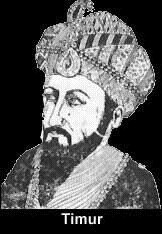 This opportunity came to Babur when he was invited to India by a discontented party. It has already been pointed out how India was then distracted by the ambitions, disaffections and rivalries of the nobles, and the Delhi Sultanate existed in nothing but in name. The last nail in its coffin was driven by the ambition and revengeful spirit of some of its nobles. Two of them, Daulat Khan, the most powerful noble of the Punjab, who was discontented with Ibrahim Lodi because of the cruel treatment he had meted out to his son, Dilawar Khan, and ‘Alam Khan, an uncle of lbrahim Lodi and a pretender to the throne of Delhi, went to the length of inviting Babur to invade India. Probably Rana Sanga had some negotiations with Babur about this time.
This opportunity came to Babur when he was invited to India by a discontented party. It has already been pointed out how India was then distracted by the ambitions, disaffections and rivalries of the nobles, and the Delhi Sultanate existed in nothing but in name. The last nail in its coffin was driven by the ambition and revengeful spirit of some of its nobles. Two of them, Daulat Khan, the most powerful noble of the Punjab, who was discontented with Ibrahim Lodi because of the cruel treatment he had meted out to his son, Dilawar Khan, and ‘Alam Khan, an uncle of lbrahim Lodi and a pretender to the throne of Delhi, went to the length of inviting Babur to invade India. Probably Rana Sanga had some negotiations with Babur about this time.
Babur had for some time been cherishing the ambition of invading Hindustan. His early training in the school of adversity had implanted in him the spirit of adventure. He at once responded to the invitation, entered the Puniab and occupied Lahore in 1524. But his Indian confederates, Daulat Khan and ‘Alam Khan, soon realized their mistake. When they saw that Babur had no desire to give up his Indian conquests, they turned against him. This compelled Babur to retire to Kabul, where he began to collect reinforcements with a view to striking once again.
